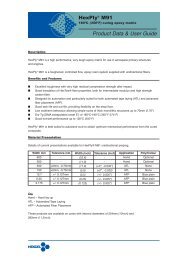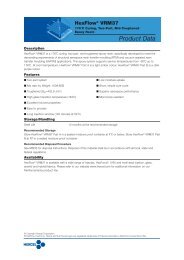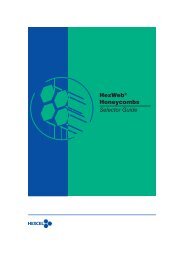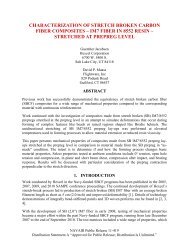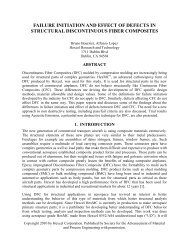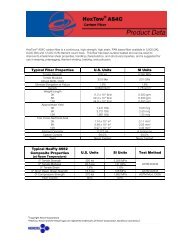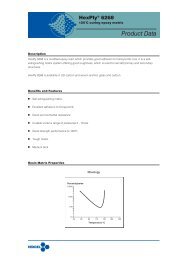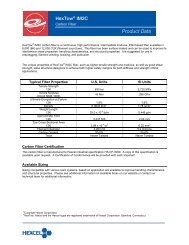HexForce® US Technical Fabrics Handbook - Hexcel.com
HexForce® US Technical Fabrics Handbook - Hexcel.com
HexForce® US Technical Fabrics Handbook - Hexcel.com
Create successful ePaper yourself
Turn your PDF publications into a flip-book with our unique Google optimized e-Paper software.
8<br />
THE PROCESS<br />
CONVERTING YARN TO FABRIC<br />
1. Warping<br />
The first step in the warping stage is beaming, where purchased<br />
yarn is transferred from the bobbin creel to section beams. Most<br />
input yarn is in singles form; however, some yarn is twisted and<br />
plied together to yield unique properties. The section beams<br />
constitute the machine direction or thread sheet segment of yarn in<br />
the loom. Several section beams are produced and consolidated<br />
into a group called a set, which provides the input for the<br />
slashing process.<br />
2. Slashing<br />
The slashing process <strong>com</strong>bines the warp ends of the set’s<br />
multiple section beams into a single beam for weaving called a<br />
warp or loom beam. Sizing is applied to the threadsheet filaments<br />
and to avoid abrasion of individual strands.<br />
3. Entering<br />
The final stage of preparation<br />
is entering, where the warp<br />
is set up for installation in<br />
the loom. A warp can contain<br />
over 4,500 individual ends,<br />
depending on the design of the<br />
style. Each warp end is drawn<br />
through a drop wire, heddles<br />
and a reed, either by hand or by<br />
machine. These parts work<br />
together to mechanically arrange<br />
and control the warp yarn<br />
spreadsheet during the weaving<br />
process on the loom.





